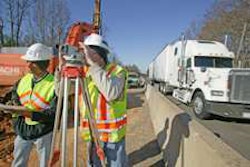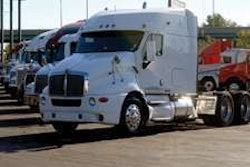I learned today a little bit more about the new hours of service rules that will go into effect on July 1, 2013. Learned by reading about them in trucking publications.
Diane and I woke up this morning in our Florida vacation house where we plan to stay until mid-February. Today was the same as most other days we have spent here; a nice vacation day.
Most people having anything to do with trucking know that new hours of service rules were recently announced and that most of them will not take effect until mid-2013. Because of the distant effective date, I have not paid close attention. I thought Diane and I would hear more about this at Landstar BCO Appreciation Days last week but company people there barely mentioned it. When they did, it was only to say that the rule makers will be sued (yet again) and the rules may very well change (yet again).
The trucking industry press has covered this topic in depth. There is one thing, however, that no one has mentioned; at least no one I have heard or read. That is the environmental impact of the new rules.
The new rules require truck drivers to take a 30 minute break during their work day. Non-truckers may not understand this but that is not good news for someone who gets paid by the mile, is frequently delayed by shipping and receiving departments, often gets delayed by traffic, commonly faces a challenge when finding a legal parking place large enough for a truck and is given a limited number of hours to work each day.
People have talked about the productivity aspect of this required break but not about air quality. Most truckers will take their legally required break in their trucks. They will run generators or idle their truck engines to remain safe with the doors locked and windows closed in a parked truck, and comfortable when outside temperatures necessitate use of the truck’s heater or air conditioner (which is almost always).
I have no way of knowing what amount of diesel engine emissions will be added to the atmosphere because all truckers are now required to take a 30 minute break, but I do know that hundreds of thousands, perhaps even millions, of drivers will run their diesel engines while doing so. Under the old rules such breaks were not mandated and were not taken to the extent they will be next year.
Some people are suggesting that the productivity decline may be significant enough to prompt carriers to add more trucks to their fleets so they can move the same amount of customer freight as before in the same amount of time. If that happens, there will be more trucks on the road, burning more fuel to move the same amount of freight.
Even without such an addition of trucks, most drivers will park and burn fuel 30 minutes a day, not because they are required to burn fuel but because they are required to park and they will burn fuel to stay safe and comfortable in their trucks.
The EPA claims to have improved air quality by regulating diesel engine manufacturers and operators. Harmful emissions coming out of truck exhaust pipes have been reduced because of legally required and very expensive engine add-ons. I’m wondering, to what extent do the new FMCSA regulations counteract the air quality effects of the EPA regulations?
In other words, is the FMCSA putting back into the air what the EPA is taking out?










